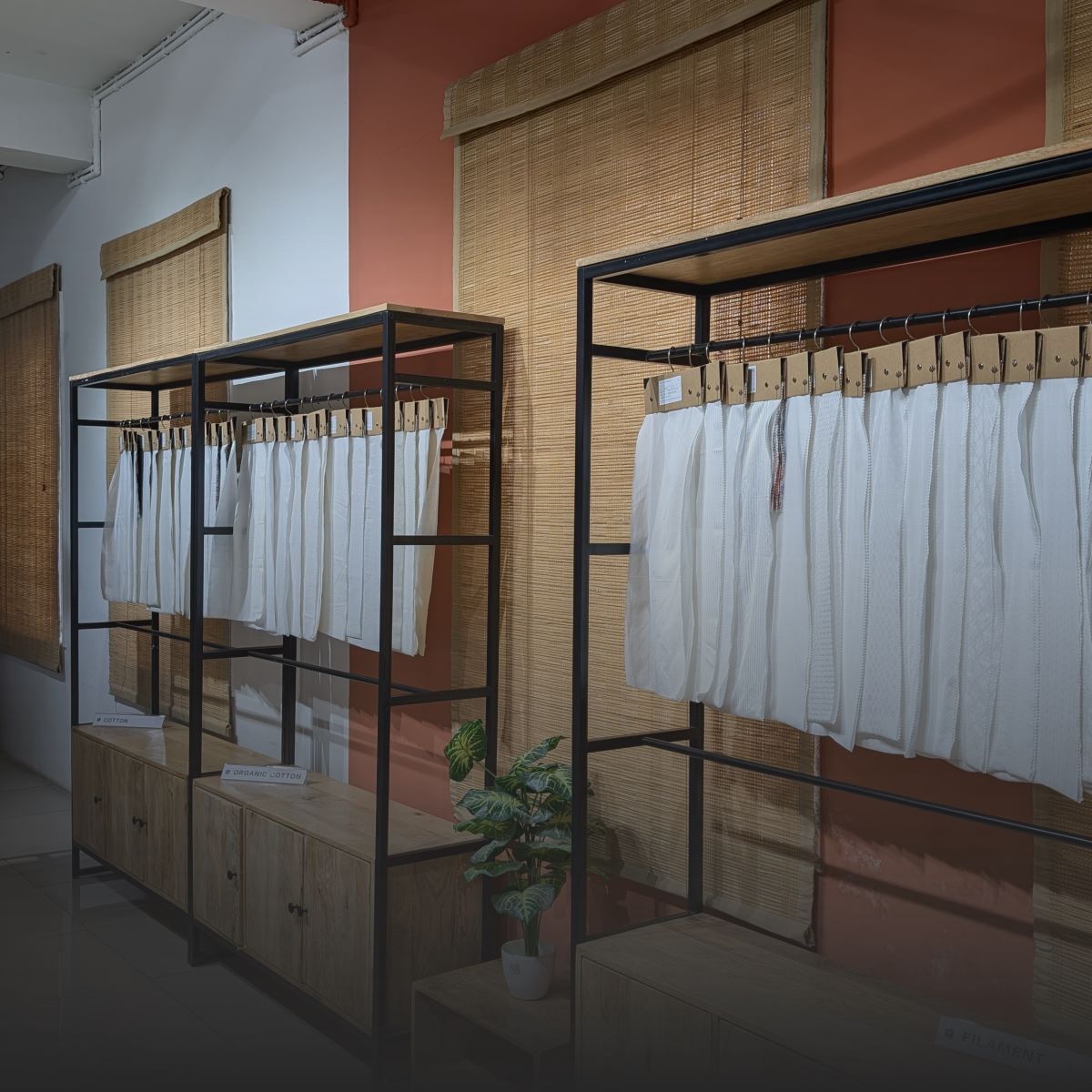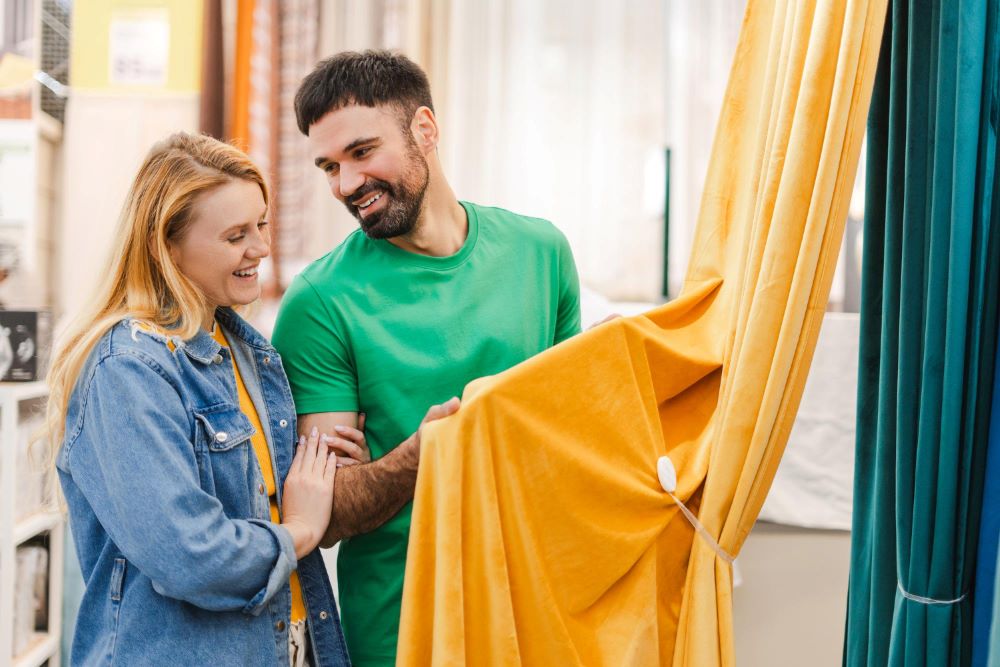SEO for textile businesses means optimizing your website to rank higher on search engines like Google, making it easier for customers to find your fabrics, products or services. SEO helps increase visibility, attract more qualified traffic and boost sales by connecting you with customers who are actively searching for textile solutions.
In today’s digital world, textile businesses that do not optimize their websites miss out on important opportunities. Studies show that 80 percent of textile businesses are losing potential customers because they are not showing up in search results.
If you are a fabric supplier or a textile shop catering to designers, SEO is key to success. With the right strategies, your business can become more visible, earn trust and see a boost in sales in the competitive textile industry.
Why SEO is Crucial for Textile Companies

SEO is important for textile companies because it helps them show up in search engine results. By improving your website, you can attract more customers, get better traffic and increase sales.
SEO is a key part of any digital marketing plan. Without it, your website might get lost among competitors. If customers can't find you on Google, how will they do business with you?
Here’s why SEO is a game changer for your textile business:
|
SEO Benefit |
Description |
|
Increased Visibility |
SEO helps more people find your website when they search for textile products. |
|
Qualified Traffic |
SEO brings in visitors who are already interested in textile products, not random clicks. |
|
Better Conversion Rates |
A well-optimized website makes it easier for visitors to take action, like buying or contacting you. |
|
Building Authority |
SEO helps your business gain trust by using the right keywords and creating helpful content. |
Example: A textile company specializing in sustainable fabrics optimized their site with long-tail keywords like "eco-friendly fabric suppliers" and saw a 40% increase in organic traffic. As a result, customers actively seeking specific products found their site more easily and the company saw higher conversion rates.
Understanding SEO for Textile Businesses

SEO for textile businesses is the process of optimizing your website to appear in search results when customers look for specific products like fabrics, materials or suppliers. This helps your business become more visible, attract the right customers and ultimately drive more sales.
Key SEO Strategies for Textile Companies

Keyword research, on-page optimization, technical SEO and off-page strategies like backlinks are key to a successful SEO plan for textile businesses. These strategies increase visibility, drive relevant traffic and improve search engine rankings.
To get the most out of SEO, textile companies need to focus on four main areas: keyword research, on-page SEO, technical SEO and off-page SEO.
1. Keyword Research: Targeting the Right Terms
Keyword research is the backbone of your SEO strategy. Whether you are a beginner or an established business, the goal is to target the right keywords that will bring relevant traffic to your site.
For Beginners or Startups:
When you are just starting out, it is important to focus on low-competition keywords with high search volume. These are keywords that are not dominated by major competitors, giving you a better chance of ranking higher in search results.
Keyword Difficulty (KD) is a metric that shows how hard it is to rank for a keyword. For beginners, focus on keywords with a low KD (usually under 40) and a decent search volume. Use tools like Google Keyword Planner to analyze keyword difficulty and search volume. For instance, if you are a new textile business, you could target niche keywords like “affordable linen fabric for home decor” instead of more competitive terms like “silk fabric suppliers.”
Example: If your business offers cotton fabrics, instead of targeting a broad keyword like “cotton fabric,” go for a more specific keyword like “affordable cotton fabrics for quilting” to avoid competition from established sites.
For Established Businesses:
For well-established businesses, you will want to target medium to high-competition keywords with high search volume. These keywords typically have a higher difficulty level but are worth targeting since they bring in a larger audience.
Strategy: For example, if you are a prominent supplier of sustainable fabrics, target keywords like “eco-friendly fabric suppliers” or “sustainable fabric for fashion design” that have a good balance of volume and competition.
Tip for Established Businesses: Focus on long-tail keywords. These have lower competition and are more specific, making it easier to rank for them while still attracting qualified traffic. For example, "luxury organic cotton fabric suppliers for fashion designers" targets a very specific audience.
Use Google Trends for New Topics:
Keep an eye on Google Trends to find out trending keywords or new topics in the textile industry. This tool can help you track rising search terms and give you an edge over competitors who have not jumped on these trends yet.
2. On-Page SEO: Optimizing Your Website
On-page SEO involves optimizing the content, structure and HTML elements of your website to ensure it is search-engine-friendly. Key elements include content optimization, meta tags, image alt text and internal linking.
Content Optimization: Create Valuable Content
Every page of your website should be crafted with the intent of providing value to your visitors while targeting relevant keywords. For a textile business, this can include blog posts, product descriptions, guides and educational content.
- Example: If you sell silk fabrics, create content around “how to care for silk fabric” or “different uses for silk in fashion.” This will not only target keywords but also position you as an expert in your field.
Meta Tags and Alt Text: Boost Click-Through Rates (CTR)
Meta tags (title tags and meta descriptions) and alt text for images are essential for optimizing your website. These elements serve as a quick preview for search engines and potential customers. Well-optimized meta tags can significantly improve your click-through rate (CTR).
-
Title Tag Optimization: Ensure that your title tag includes your main keyword and clearly describes the page. Keep it under 60 characters to avoid truncation in search results.
Example: For a page selling cotton fabric, use:
Title: “Premium Cotton Fabric for Fashion Designers | XYZ Textiles”
-
Meta Description: A compelling meta description encourages users to click on your page. Keep it between 150-160 characters and make it actionable by including a call-to-action (CTA).
Example: “Shop premium cotton fabrics for fashion designers. Ideal for sustainable fashion projects. Order now for quick delivery.”
-
Alt Text for Images: Always include relevant keywords in your image alt text. This helps search engines understand the content of the image and improves accessibility for users with visual impairments.
Example: If you have a product image of linen fabric, use alt text like:
“Natural Linen Fabric for Dresses | Soft and Durable”
Internal Linking: Improve Website Structure
Internal links are links that point to other pages within your own website. They help search engines crawl your site and improve the user experience by guiding visitors to related content.
Link to related product pages or blog posts within your content to keep users engaged on your site. For example, if you have a blog post on “choosing the best fabric for wedding dresses,” you could link to your product page for bridal fabrics.
3. Technical SEO: Laying the Foundation for Success
Technical SEO ensures that your website is structured in a way that search engines can easily crawl and index. Key factors include site speed, mobile-friendliness and website architecture.
Site Architecture: Make It Easy for Search Engines to Crawl
A clear and organized website structure helps search engines easily navigate your content. Create a logical hierarchy with a well-organized URL structure. For example, your product pages should be categorized clearly, such as /fabrics/cotton/ or /fabrics/linen/.
- Use a breadcrumb navigation on your website, which allows both users and search engines to easily trace the path back to the homepage or category pages.
Mobile-Friendliness: Optimize for Mobile Users
A large percentage of textile-related searches are done on mobile devices. Google uses mobile-first indexing, meaning it primarily uses the mobile version of your site to rank it. Make sure your website is responsive, meaning it automatically adjusts to fit various screen sizes.
- Test your website’s mobile responsiveness with Google’s Mobile-Friendly Test and make any necessary adjustments to improve the user experience on mobile devices.
Site Speed: Don’t Keep Users Waiting
A slow website can harm your rankings and user experience. Google prioritizes fast-loading websites because users tend to abandon sites that take too long to load.
- Use tools like Google PageSpeed Insights or GTmetrix to analyze your website speed and get suggestions for improvement. Compress large images, minimize JavaScript and leverage browser caching to speed up your website.
SSL Certificates: Build Trust and Security
An SSL certificate (which changes your site’s URL from HTTP to HTTPS) secures the communication between your website and users. Google considers HTTPS as a ranking factor, so it’s essential for building trust with both search engines and your customers.
4. Off-Page SEO: Building Authority and Trust
Off-page SEO involves activities that occur outside your website, such as building backlinks from high-quality, authoritative sources. It helps improve your domain authority and trustworthiness.
Backlink Building: Earn Authority and Trust
Backlinks from trusted, high-authority websites signal to Google that your content is valuable. Aim for relevant backlinks from other websites in the textile, fashion or sustainable industries.
- Reach out to textile bloggers, fashion influencers or industry publications to request backlinks. Offering guest posts or collaborating on industry reports are great ways to earn high-quality backlinks.
- Example: XYZ Fabrics collaborated with a popular fashion blog for a guest post on “Sustainable Fabrics for Eco-Conscious Designers” and earned a backlink, resulting in improved rankings for keywords like “eco-friendly fabric suppliers.”
How SEO Improves Customer Experience in the Textile Industry

SEO improves customer experience by optimizing website navigation, ensuring relevant content and enhancing site performance. It leads to better engagement, faster load times and easier access to desired products.
SEO plays a crucial role in improving the overall customer experience on your website. It is not just about ranking higher in search results; it is about creating an experience that makes it easier for customers to find what they need, engage with your content and complete their purchases.
Optimized Navigation: Enhance User Experience
A well-structured website with easy navigation ensures that visitors can quickly find what they are looking for. Whether it is fabric types, collections or a specific product, clear categories and filters are essential for improving usability.
-
Example: A fabric store with clear categories like "Cotton Fabrics," "Silk Fabrics," and "Custom Prints" helps visitors easily navigate and find the exact fabric they are interested in, improving engagement and reducing bounce rates.
- Use intuitive filter options (e.g., by color, material or price) and ensure that users can easily move from one section to another with minimal clicks.
Quality Content: Address Customer Needs and Questions
Valuable content is a key part of the user experience. When your content is tailored to solve customer problems, answer their questions and offer relevant product suggestions, it builds trust and guides customers toward conversion.
- Example: If a customer is looking for fabric for a particular project, blog posts like “Best Fabrics for Summer Dresses” or “How to Choose the Right Fabric for Fashion Design” can guide them to make informed decisions.
Faster Load Times: Reduce Frustration and Abandonment
A slow website can lead to poor customer experience and high bounce rates. Page speed directly impacts how quickly a user can interact with your content. A website that loads faster not only ranks better on Google but also keeps customers satisfied.
-
Example: If your website takes more than a few seconds to load, potential customers will leave, often never to return. Ensuring your pages load quickly can keep users engaged and improve your conversion rate.
- Compress large images, reduce unnecessary scripts and optimize website elements to speed up loading times. Tools like Google PageSpeed Insights can help pinpoint areas for improvement.
Mobile Optimization: Meet Customer Expectations Anywhere
With increasing mobile searches, it is critical to ensure that your website is fully responsive and optimized for mobile devices. A smooth mobile experience ensures customers can browse your fabric collections or make purchases while on the go.
-
Example: A customer searching for fabric while traveling on their phone expects a seamless browsing experience. If the website is slow or poorly formatted, they are more likely to leave and shop elsewhere.
- Ensure your website has a mobile-friendly design with easy-to-read text, large clickable buttons and quick load times. Regularly test your site on various mobile devices to ensure it is optimized for all screen sizes.
Customer Feedback: Build Trust Through Reviews and Ratings
Integrating customer reviews and ratings helps build trust and credibility. Positive feedback about the quality of your fabrics, delivery services and customer care can influence new customers to make a purchase.
-
Example: A textile business showcasing customer reviews like “The organic cotton fabric was perfect for my design project and delivery was fast.” will encourage potential buyers to trust the business and proceed with a purchase.
- Actively ask satisfied customers for reviews and feature them prominently on your product pages. This not only helps with SEO but also improves customer trust and confidence.
Measuring SEO Success: Tracking and Analytics

To see if your SEO is working, track things like how many people visit your site from search engines, how many take action (like buying or signing up), how quickly they leave and how well your keywords are doing.
Measuring the effectiveness of your SEO efforts is just as important as implementing them. Without tracking the right metrics, you will not know if your SEO strategies are working or where adjustments are needed. Here’s how to measure SEO success and track the most important metrics.
Key Metrics to Track for SEO Success
1. Organic Traffic: A Clear Indicator of SEO Performance
Organic traffic is the number of visitors who find your website through search engine results, not paid ads. Monitoring this metric shows you how well your SEO efforts are driving visitors to your site from relevant searches.
- Example: If your site starts seeing an increase in organic traffic after optimizing your content with the right keywords, it indicates that your SEO strategy is working.
2. Conversions: Turning Visitors into Customers
SEO is not only about bringing traffic to your site; it is about converting that traffic into customers. Track the number of visitors who take valuable actions, like making a purchase, signing up for a newsletter or contacting you for more information.
-
Example: A textile manufacturer optimized their website with long-tail keywords for eco-friendly fabrics, resulting in a 20% increase in sales conversions from search engine traffic.
- Set up conversion goals in Google Analytics to track actions such as form submissions, purchases or phone calls. This helps you measure how well your content is turning visitors into leads or customers.
Bounce Rate and CTR: Understanding User Engagement
-
Bounce Rate: A high bounce rate means users are leaving your website quickly after visiting. It could indicate that your website’s content or user experience is not meeting their expectations.
-
Click-Through Rate (CTR): The CTR shows how many people click on your website link in the search results. A higher CTR means that your meta titles and descriptions are enticing and relevant.
-
Example: If your website has a lower bounce rate and higher CTR after optimizing your product descriptions, it means that users are finding your site more engaging and relevant to their needs.
- Improve your meta titles and descriptions to make them more compelling and use internal linking to reduce bounce rates by guiding users to other relevant pages.
Tools for Tracking SEO Performance
1. Google Analytics
Google Analytics is essential for tracking traffic, conversions and user behavior. By monitoring metrics like pageviews, bounce rate and average session duration, you can understand how well your content is engaging visitors.
-
Example: You can track which blog posts or product pages are attracting the most traffic and which ones need improvement.
- Set up Goals and Events in Google Analytics to track specific actions like sign-ups or purchases, which will help you measure the success of your SEO-driven content.
2. Google Search Console
Google Search Console is another valuable tool for tracking keyword performance, search impressions and click-through rates. It helps you understand how your site ranks for various keywords and gives insights into opportunities for improving rankings.
-
Example: If a keyword you are targeting is receiving impressions but not many clicks, you can adjust your meta description to improve your CTR.
- Use Google Search Console to identify underperforming pages and keywords. Focus on improving them with better content or keyword adjustments to increase organic traffic.
Refining Your SEO Strategy Based on Analytics
Tracking metrics alone is not enough; you need to analyze the data and adjust your strategy accordingly. For instance, if you notice that certain pages have high traffic but low conversion rates, it may indicate a problem with the user experience or calls to action (CTAs).
-
Example: If a product page is getting a lot of traffic but has a high bounce rate, consider improving the product description, adding customer reviews or enhancing the images to increase engagement and conversions.
- Use insights from your analytics to refine your content strategy. For example, if you see that blog posts on “sustainable fabrics” are driving traffic, consider creating more content around sustainable fashion trends or eco-friendly manufacturing processes.
SEO Trends in the Textile Industry: What's Next?

SEO trends in the textile industry include optimizing for voice search, adapting to AI-powered search algorithms and capitalizing on sustainability-focused keywords. Staying ahead of these trends ensures your business remains competitive in an evolving digital landscape.
The digital landscape is constantly evolving and so are SEO trends. For textile businesses, staying updated on the latest SEO practices is key to maintaining a competitive edge. Here are the emerging trends in SEO that you should consider for your textile business.
Voice Search Optimization: Preparing for the Future of Search
With the rise of voice assistants like Alexa, Siri and Google Assistant, voice search is becoming increasingly popular. Customers use conversational queries to find information, products and services. This means optimizing for long-tail keywords and natural language queries for textile businesses.
-
Example: Instead of typing “organic cotton fabric suppliers,” users may ask, “Where can I find eco-friendly cotton fabric near me?”
- To optimize for voice search, use question-based keywords like “What are the best fabrics for wedding dresses?” Make sure your content is clear and directly answers these questions.
AI and Search Evolution: Adapting to Google’s Changing Algorithms
AI-driven search algorithms, like Google’s BERT and RankBrain, are changing the way search results are ranked. These algorithms focus on understanding the intent behind a search, making it important for your content to be natural and high-quality.
-
Example: If someone searches for “how to choose fabrics for a summer dress,” Google will prioritize content that directly answers that question in a detailed and natural way.
- Focus on creating high-quality, user-focused content that answers specific questions, provides value and satisfies search intent. The more useful your content is to the user, the higher it will rank.
Sustainability Trends: Capitalizing on Eco-conscious Searchers
Sustainability is becoming more important to customers and the textile industry is no different. As people look for eco-friendly fabrics and sustainable manufacturing, it's important to use keywords related to sustainability.
For example, keywords like “organic cotton fabric,” “sustainable textile manufacturing,” or “eco-friendly fabrics for fashion” are becoming more popular as shoppers focus on sustainability when buying.
Add sustainability keywords to your content, product descriptions and blog posts. Show your commitment to eco-friendly practices and sustainable sourcing.
Mobile-First Indexing: Ensuring a Seamless Mobile Experience
Google now uses mobile-first indexing, meaning it primarily considers the mobile version of your website when determining rankings. With the increasing number of users shopping on mobile devices, it is crucial to ensure that your website is mobile-optimized and provides a smooth experience.
-
Example: If your website is slow or difficult to navigate on mobile, you risk losing potential customers who are browsing on their phones.
- Ensure your website is responsive and that it loads quickly on mobile devices. Focus on improving mobile usability, such as larger clickable buttons and easy-to-read text, to enhance user experience.
Video Content: Leveraging Visuals for SEO
Video content is becoming an increasingly important part of SEO strategies. It enhances engagement, builds trust and can drive traffic. For textile businesses, showcasing your fabrics, design processes or product usage through videos can make your content more appealing.
-
Example: A textile brand could create videos showcasing the different types of fabrics they offer or tutorials on how to select fabrics for different fashion needs.
- Incorporate videos into your website and social media strategy. Use relevant keywords in your video titles, descriptions and tags to boost search engine rankings.
By staying ahead of these SEO trends, your textile business can ensure long-term growth and visibility in an increasingly digital and competitive market. These trends not only improve your search engine rankings but also ensure your content resonates with your target audience.
Conclusion:
SEO helps textile businesses increase visibility, attract more qualified customers and boost sales. Implementing keyword research, on-page optimization, technical improvements and staying updated with SEO trends can position your textile brand for long-term online success.
A well-planned SEO strategy is no longer optional for textile businesses; it is essential for growth, visibility and customer engagement. Throughout this guide, we have covered the critical components of building a strong SEO foundation:
-
Keyword Research: Target both low-competition, high-volume keywords and industry-specific terms to reach the right audience.
-
On-Page SEO: Optimize your website structure, content, meta tags and images to enhance both user experience and search engine rankings.
-
Technical SEO: Improve your site’s speed, mobile usability and architecture to ensure seamless navigation and higher crawlability.
-
Off-Page SEO: Build high-quality backlinks and leverage local SEO to establish authority and attract a regional audience.
-
SEO Trends: Stay ahead by optimizing for voice search, AI-driven algorithms, sustainability-focused keywords and mobile-first browsing.
We also happen to be a magnet for suggestions, and would love to catch yours….throw us yours on hello@fabriclore.com




